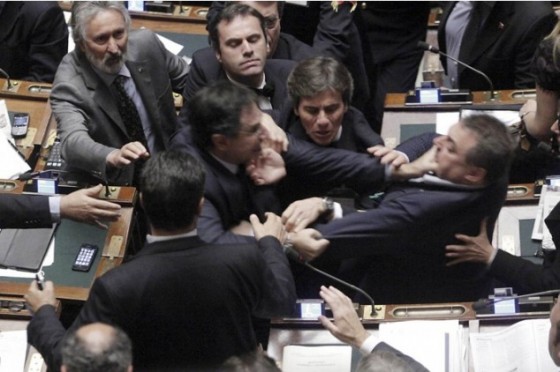
I suspect that Thomas Sowell’s classic work, Conflict of Visions: Ideological Origins of Political Struggles (2002), may be one of the most important books that Christians today can read for help in thinking through worldview clashes and political partisanship. It is an illuminating, even-handed book—not written for purposes of advocacy, and not written from an explicitly Christian perspective, but written to help us understand some of the main contours of why there tend to be roughly two visions of the world when it comes to freedom, power, equality, justice, knowledge, and man.
The big idea in the first paragraph of this book may seem obvious to you, but when I first read this some years ago, it was enormously illuminating to me:
One of the curious things about political opinions is how often the same people line up on opposite sides of different issues. The issues themselves may have no intrinsic connection with each other. They may range from military spending to drug laws to monetary policy to education. Yet the same familiar faces can be found glaring at each other from opposite sides of the political fence, again and again. It happens too often to be coincidence and it is too uncontrolled to be a plot.
A closer look at the arguments on both sides often shows that they are reasoning from fundamentally different premises. These different premises—often implicit—are what provide the consistency behind the repeated opposition of individuals and groups on numerous, unrelated issues. They have different visions of how the world works.
Why, at the end of the day, do we have such a hard time understanding one another across the political divide? Why can’t we find middle ground? As Rodney King asked, Why can’t we all just get along? Sowell identifies a key part of the problem:
Whatever one’s vision, other visions are easily misunderstood—not only because of caricatures produced by polemics but also because the very words used (“equality,” “freedom,” “justice,” “power”) mean entirely different things in the context of different presuppositions. It is not mere misunderstanding but the inherent logic of each vision which leads to these semantic differences, as well as to substantively different conclusions across a wide spectrum of issues. Visions are inherently in conflict, quite aside form the misunderstandings, hostilities, or intransigence generated in the course of polemics. (pp. 245-246)
Sowell recognizes that there is a continuum of social visions—that sense of how the world works and the foundation upon which our theories are built. But for convenience, he identifies two broad and irreconcilable categories: the constrained vision and the unconstrained vision. Sowell identifies their basic difference as stemming from a different conception of the nature of man. So in successive chapters he looks at the constrained vs. unconstrained vision of the nature of man, the nature of knowledge, and the nature of social processes.
Let’s look at an example. The way in which the unconstrained vision thinks about “results” determines the ways in which its advocates define and analyze key concepts like freedom, power, and equality. If results can be directly prescribed, and if basic concepts are expressed in terms of results, then we get something like the following:
The degree of freedom is . . . the degree to which one’s desires can be realized, without regard to whether the obstacles to full realization be the deliberately imposed restrictions of government or the lack of circumstantial prerequisites.
Power is likewise defined by results: If A can cause B to do what A wants done, then A has power over B, regardless of whether A‘s inducements to B are positive (rewards) or negative (penalties).
Equality too is a result, the degree of equality or inequality being a direct observable fact. (pp. 246-247)
All these basic terms are defined in profoundly different ways under the assumptions of the constrained vision. In that vision, man cannot directly create social results, but he can create social processes. Therefore, for the constrained visions basic concepts like freedom, justice, power, and equality get their significance and character from processes, whereas the unconstrained vision (as we saw) thinks of them mainly in terms of results. For example, in the constrained vision:
A social process has freedom to the extent that it refrains from interfering with the choices of individuals—whether or not the circumstances of those individuals provide them with many options or few.
A social process has justice to the extent that its rules are just, regardless of the variety of outcomes resulting from the application of those rules.
Power is exerted in social processes, by individuals or by institutions, to the extent that someone’s existing set of options is reduced—but is not an exertion of power to offer a quid pro quo that adds to his existing options.
Equality as a process characteristic means application of the same rules to all, without regard to individual antecedent conditions or subsequent results. (p. 247)
Sowell wisely writes:
The clash between the two visions is not over the actual or desirable degree of freedom, justice, power, or equality—or over the fact that that there can only be degrees and not absolutes—but rather over what these things consist of, in whatever degree they occur.
Sowell is one of the most eloquent advocates today for the constrained vision, but in this book he plays it straight, choosing to explain rather than to persuade. As such, it is not a Christian book per se, analyzing the various options in light of God’s word written. But I would still submit that it may be one of the most important books a Christian can read to understand what is going on in today’s culture when it comes to political struggles.
[Emphasis added in quotes.]


















